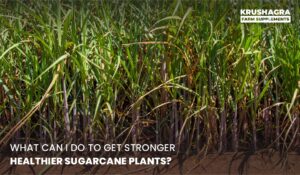Cowpea, also known as black-eyed pea or southern pea, is one of the most important food legume crops in the semiarid tropic areas in Asia, Africa, southern Europe as well as Central and South America. It is considered as a major source of income for farmers living in semidesert regions where it is hard to cultivate crops that require lot of irrigation and soil fertility.
In Indian context, Cowpea is grown largely in parts of Punjab, Haryana, Delhi, and West Uttar Pradesh and in small amount in states like Rajasthan, Karnataka, Kerala, Tamil Nadu, Maharashtra, and Gujarat. It is extremely drought-tolerant and a warm weather crop, which is why it can be cultivated well enough in drier regions of tropics, where other food legumes are difficult to produce. Moreover, it can adapt to acid and infertile soils well.
Being a legimunous plant, Cowpea can perform the nitrogen-fixation in soil with the help of symbiotic bacteria under favourable conditions.This is also the reason why it can be used for intercropping. It also serves well as a catch crop, mulch crop, and green crop.
However, Cowpea production can grow on multifold levels by application of essential nutrients like phosphorous, zinc, boron, and rhizobium, and their appropriate fertilization methods. Lets understand the properties of these nutrients and the biofertilizers that will provide the same for a better yield of cowpea production in India.
Nutrient management for Cowpea production
Zinc – Zinc deficiency in plants can result in their stunted growth, small and yellow leaves, and spikelet sterility. This is due to the presence of zinc deficient soils, a reality caused by intensive cropping systems, least use of organic manure, use of high use of high analysis fertilizers (such as urea and DAP in place of AS and SSP), and poor irrigation.
Zinc is essential for enzymes that derive lot of metabolic reactions in cowpea crop. In absence of zinc, the crop would lack the formation of protein, carbohydrate, and hinder the photosynthesis process due to lowering of chlorophyll production. This nutrient is generally lacking in sandy soils or in soil types and climatic regions where primarily dryland/rainfed and farming is practiced. Quantity of Zinc requirement is determined by the soil type i.e. red sandy, loamy soils, black soils, alluvial soils, and hilly sandy loam soil. It also depends on availability of zinc or its status in the soil.
Krushagra ZnSB synthesizes the complex insoluble compounds like zinc sulphide, zinc oxide, and zinc carbonate in soluble form of zinc and supports in enhancement of cowpea tremendously. It can be implemented to crops via seed treatment wherein the biofertilizer solution is mixed with water and the seeds are dipped in the solution for 20 minutes. These seeds are then sown in the soil immediately.
Phosphorous – Phosphorous tends to stimulates the plant growth and considered as a primary micronutrient alike nitrogen and potassium. For a legume crop like cowpea, it facilitates the nitrogen-fixation abilities. It essentially initiates the nodule formation and required in large quantities for young cells such as shoot and root tips to increase metabolism and promote rapid cell division. It also aids in flower initiation, seed and fruit development.
However, studies suggest that phosphorous fertilization can lead to reduction of zinc intake in crops or induce zinc deficiency, which is actually necessary for cowpea production. Hence, one must ensure right quantity of both phosphorus and zinc since a combination of them would support the crop yield tremendously. Applying Zn-containing P fertilizers improves shoot growth, and demonstrates root growth improvements as well.
Krushagra PSB solubilizes the insoluble tricalcium phosphate and rock phosphate in soil and make it available to cowpea plants. This biofertilizer can be applied through fertigation or hydroponic operations.
Rhizobium – Lack of rhizobium is common in micronutrientsacid soils. Even though legumes fixate the atmospheric nitrogen naturally, inoculating the cowpea crop with promiscuous rhizobia can achieve substantial increases in legume nodulation, biomass yield, nitrogen fixation, and post-crop soil nitrate levels. It can be applied to the crop via seed treatment method.
However, Rhizobium is a crop-specific biofertilizer, and should only be used for legume crops. Krushagra Nitfit RB fits well as an appropriate product for all legumes including cowpea crop. .
Boron – Plants under low B supply are more susceptible to damage due to high light intensity associated with long and hot, sunny days. The absorbed light energy in photosynthesis is significantly reduced, leading to use of an excess amount of energy and potential for leaf damage.
Low soil temperature can also reduce root boron uptake. As cowpea is largely produced in dry and warm regions, providing boron biofertilizer is essential for the crops. Supplying boron helps the cell wall formation and movement of sugar in the crops. An adequate amount of boron will also perform nitrogen fixation and nodulation in legumes like cowpea. It can be applied through foliar spray, or fortigation.
These nutrients are supposed to be provided in exact amount and only when required. Not more, or less. Since Cowpea needs a combination of these nutrients, one should know the right quantity, mixture, and frequency during fertilization. To know more about Krushagra ZnSB, Krushagra PSB, Krushagra NitFit RB, and other sustainable farm supplements, click here.






